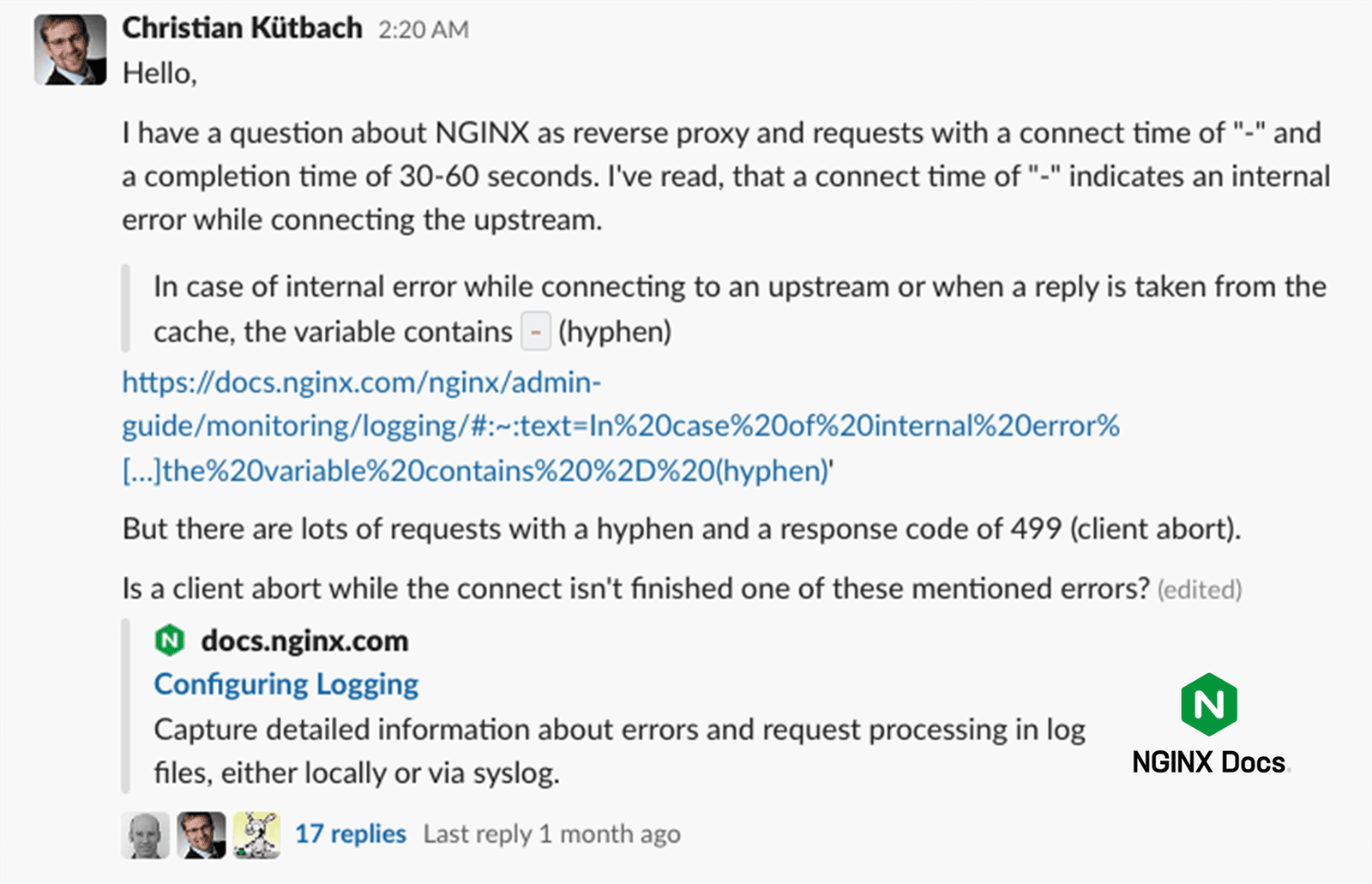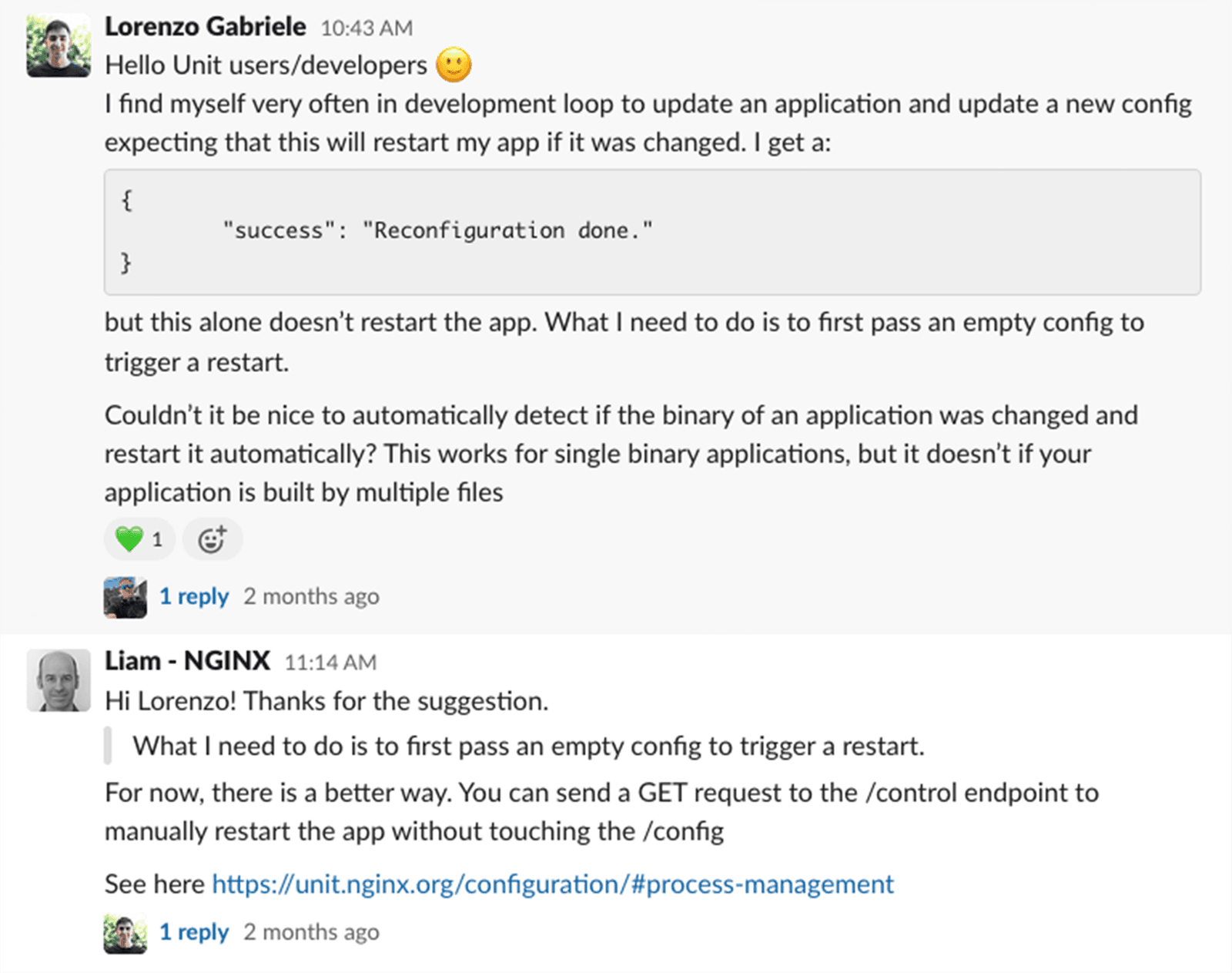You may have seen a recent blog post from Rob Whiteley, General Manager of the NGINX Product Group at F5, outlining the future of NGINX and how we’re getting back to our open source roots. One way we’re making stronger connections to our open source community is on the new NGINX Community Slack:
- Create an account on NGINX Community Slack
- Sign in if you already have an account
The NGINX community has done a wonderful job finding help and answering each other’s questions across far corners of the Internet. The NGINX team is constantly impressed by the discussions we see online. That being said, there’s a gap in our community. That’s why we’ve launched NGINX Community Slack as a watering hole at which we can digitally gather with the NGINX community, and I’d like to invite you to join.
NGINX Community Slack is a place where you can give and receive help with NGINX questions and issues, share useful advice, get pointers to additional information, and even find info on related projects. You can keep up to date with the latest announcements and change logs.

The NGINX team will share resources, and we encourage you to post your favorites as well. Discover new NGINX open source projects and hear from the engineers involved by joining channels like #nginx-unit.

We also actively monitor the #feedback channel where you can share your thoughts on open source at NGINX (like what features you’d like to be moved from NGINX Plus to NGINX Open Source), give feedback about your experience using NGINX, or share whatever else you think is important for us to know.
Whether you are brand new to using NGINX or have been with us from the beginning, we value your participation. Jump in on NGINX Community Slack, introduce yourself, and get started with your community. And feel free to ping me and say hi when you join!
About the Author
Related Blog Posts

Secure Your API Gateway with NGINX App Protect WAF
As monoliths move to microservices, applications are developed faster than ever. Speed is necessary to stay competitive and APIs sit at the front of these rapid modernization efforts. But the popularity of APIs for application modernization has significant implications for app security.
How Do I Choose? API Gateway vs. Ingress Controller vs. Service Mesh
When you need an API gateway in Kubernetes, how do you choose among API gateway vs. Ingress controller vs. service mesh? We guide you through the decision, with sample scenarios for north-south and east-west API traffic, plus use cases where an API gateway is the right tool.
Deploying NGINX as an API Gateway, Part 2: Protecting Backend Services
In the second post in our API gateway series, Liam shows you how to batten down the hatches on your API services. You can use rate limiting, access restrictions, request size limits, and request body validation to frustrate illegitimate or overly burdensome requests.
New Joomla Exploit CVE-2015-8562
Read about the new zero day exploit in Joomla and see the NGINX configuration for how to apply a fix in NGINX or NGINX Plus.
Why Do I See “Welcome to nginx!” on My Favorite Website?
The ‘Welcome to NGINX!’ page is presented when NGINX web server software is installed on a computer but has not finished configuring